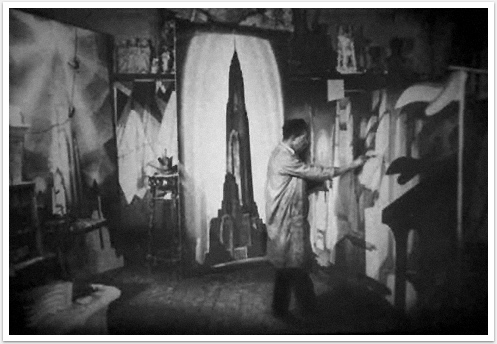



"The rendering is a means to an end; the end is architecture."
-Hugh Ferriss (1940)
Ferriss was born and raised in St. Louis, Missouri and he attended Washington University, where he received a degree in architecture. However upon entering the work field Ferriss soon discovered his preference and talent for rendering the designs of other architects rather than coming up with the blueprints himself.
I choose Ferriss because I’ve always loved his drawings and the way they manage to be both eerie and magical as well as realistic, simultaneously. Though I feel like the particular buildings that Ferriss rendered (most of them a part of the New York skyline) were pieces of art in and of themselves, his reproduction of them gave them a re-envisioning in which the building in question-usually just another skyscraper competing for attention in a skyline full of similar attention grabbers-became a focal point with its own dark story. Indeed he draws the buildings in night scenes, with the appearance the they are being lit up by spotlights or are surrounded by a halo. In some images (adding the the allure) its as if the images are floating in a fog. Although some of Ferris' more commercial drawings are done in graphite, he admitted to preferring to working with charcoal in a subtractive method because of its bold effects and malleability.
In my research I found a website put together by Columbia University student Michael Mallow, in remembrance of the enigma that was Ferriss’ success. Mallow writes: “By the mid-twenties, renderings by Ferriss had become almost de rigeur for successful competition projects; countless skyscrapers waited their turn to be bathed in the dark monumentality emanating from his drafting table. In these works a blasé department store appears as a giant lording over its block. Stodgy hotels cease to be stodgy hotels and become looming silhouettes emerging from the urban haze like shipwrecks. Ferriss went to grand new lengths in suppressing detail for mood, and clients loved it.” In my opinion Mallow’s description fully captures the mystery and intrigue that is Ferriss’ work.
If anybody is interested in seeing more of Ferris' artwork, I really like the following site, which has 341 drawing of his taken from the collection at Columbia University:
http://newsfeed.kosmograd.com/kosmograd/graphic_design/page/2/
Bibliography
Ferriss, Hugh. Power in Buildings, An Artist’s View of Contemporary Buildings. New York: Columbia University Press, 1953.
Ferriss, Hugh. The Metropolis of Tomorrow, with essay by Carol Willis. New York: Princeton Architectural Press, 1986.
Mallow, Michael. "A Ferris To Remember." Columbia University, New York. Web. 6 Nov. 2010.
http://www.columbia.edu/cu/bw/b_and_w/nov04/features/ferriss/ferriss.html
No comments:
Post a Comment